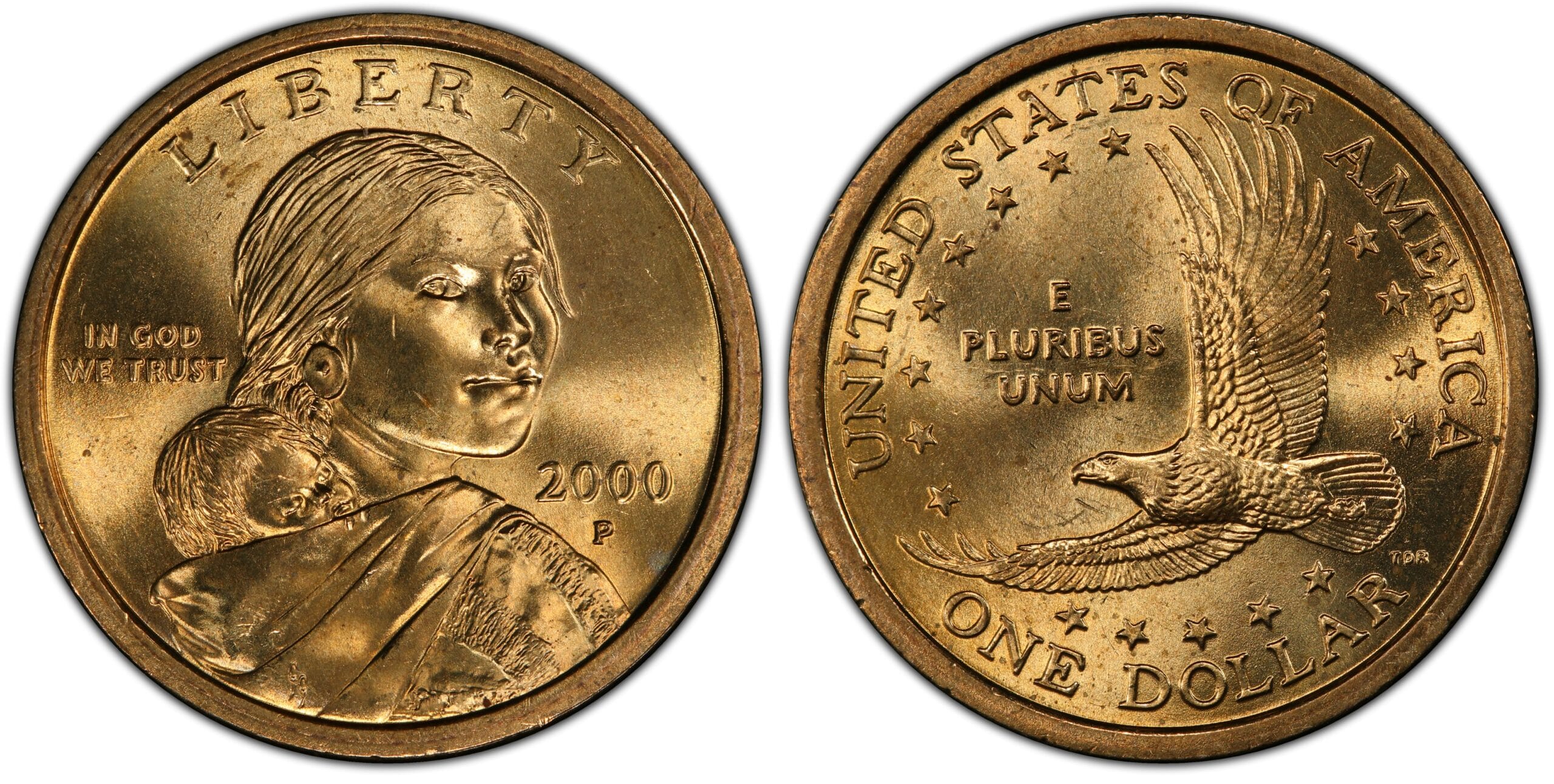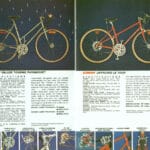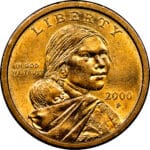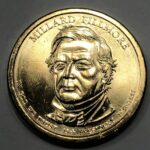This comprehensive guide delves into the captivating world of Sacagawea dollars, exploring their historical significance, unique design elements, key dates and rarities, and smart collecting strategies. Whether you’re a seasoned numismatist or a curious beginner, this guide offers valuable insights into these intriguing golden coins. Before you sell your sacagawea dollar coin, you might want read this article to know its worth. Or are you looking for the serial number on your Schwinn bicycle to determine when it was originally manufactured?
A Golden Opportunity: Why Collect Sacagawea Dollars?
Introduced in 2000 to replace the cumbersome Eisenhower dollar, the Sacagawea dollar, featuring Sacagawea and her son, Jean Baptiste, initially struggled to gain widespread circulation. This very lack of popularity, however, contributes to its appeal among collectors today. The Sacagawea dollar represents a unique intersection of history, numismatics, and the thrill of discovering rare varieties.
Design and Historical Significance
The Sacagawea dollar isn’t merely a piece of currency; it’s a tribute to a pivotal moment in American history. The coin honors Sacagawea, the Shoshone guide who played a crucial role in the Lewis and Clark expedition. This powerful imagery acknowledges the often-overlooked contributions of women and Native Americans in shaping the nation’s narrative.
A Collector’s Dream: Key Dates, Rarities, and Errors
Certain Sacagawea dollars are worth significantly more than their face value. Rarity, driven by factors like low mintage numbers and unique die varieties, plays a crucial role in determining a coin’s value. Some key dates and varieties to look out for include:
- The 2000-P Cheerios Dollar: Released as a promotional item in Cheerios cereal boxes, this variety is distinguished by sharper detail on the eagle’s tail feathers. While not exceptionally rare, uncirculated examples can command a premium.
- Mule Errors: These extremely rare errors occur when a coin is struck with the wrong dies, resulting in a mismatched design. For instance, a Sacagawea dollar obverse might be paired with the reverse of a state quarter or a presidential dollar. Such mishaps can drastically increase a coin’s value. Known examples include the 2000-P Sacagawea Dollar/Statehood Quarter Mule, the 2014-D Sacagawea Dollar/Presidential Dollar Mule, and the 2000-D Sacagawea Dollar/South Carolina Quarter Mule. Even a 2000 Lincoln Cent struck on a Sacagawea Dollar planchet exists, a testament to the unpredictable nature of minting errors.
- Die Varieties: Subtle variations in the dies used to strike the coins can result in unique features, adding to their collectibility. A magnifying glass can be invaluable in spotting these often-minute differences.
- Broadstrikes: These errors occur when the coin press isn’t functioning at full power, resulting in a wider, slightly flattened coin.
- Doubled Die Reverses: Misaligned dies can create a “ghostly” double image on the reverse of the coin, increasing its value to collectors.
Building Your Collection: Strategies and Tips
Ready to embark on your Sacagawea dollar collecting journey? Here’s a roadmap to get you started:
Understanding Coin Grading
Familiarize yourself with coin grading standards. Professional grading services like PCGS (Professional Coin Grading Service) and NGC (Numismatic Guaranty Corporation) assess a coin’s condition, assigning a grade that directly impacts its value.
The Hunt for Varieties
Examine your coins closely! A magnifying glass can help you identify potentially valuable die varieties or errors. Resources like variety guides and online forums can assist in your identification efforts.
Pricing and Valuation
Consult numismatic price guides and online resources to gauge the value of your coins. Remember, prices can fluctuate, so staying updated is essential.
Connecting with the Community
Joining online forums or local coin clubs can provide valuable insights, connect you with fellow collectors, and enhance your numismatic knowledge.
The Resurgence of the Sacagawea Dollar
Despite its initial lukewarm reception in circulation, the Sacagawea dollar has experienced a revival among collectors. Its unique history, the potential for discovering rare varieties, and its relative youth in the numismatic world make it an accessible and engaging collecting area.
Is Every Sacagawea Dollar a Treasure?
While the thrill of discovering a rare and valuable Sacagawea dollar is undeniable, it’s important to manage expectations. The majority of these coins in circulation are worth their face value. However, understanding the factors that influence value—mint year, mint mark, errors, and condition—increases your chances of unearthing a hidden gem.
Why is the 2000-P Sacagawea Dollar Worth More?
The 2000-P Sacagawea dollar presents an intriguing case study in numismatics. While most 2000 Sacagawea dollars are common, the Philadelphia (P) mint mark variety holds particular interest for collectors. This is largely due to its relatively low mintage compared to other 2000 Sacagawea dollars, making it inherently scarcer. Additionally, the 2000-P was struck with a different die, resulting in subtle design variations that further distinguish it.
Beyond the standard 2000-P, there are other variants, including the “Cheerios Dollar” with more defined tail feathers on the eagle. Even rarer are “Goodacre Presentation Dollars,” a limited edition of 5,000 coins encapsulated by ICG and linked to the coin’s sculptor, Glenna Goodacre.
The presence of errors, such as the “Wounded Eagle” variety, further diversifies the 2000-P landscape and adds to its potential value. Finally, the condition significantly influences a coin’s worth. A professionally graded, uncirculated 2000-P in pristine condition will command a much higher price than a circulated counterpart.
How to Spot a Rare Sacagawea Dollar
Identifying a rare Sacagawea dollar requires a keen eye and some knowledge. Look beyond the date and focus on details. The “Cheerios Dollar,” for example, has more defined tail feathers on the reverse eagle. Mule coins, with mismatched designs, are another rarity. Carefully examine your coins for any unusual features, errors, or mismatched designs. Consulting a professional grading service is recommended for accurate authentication and valuation.
| Feature | 2000-P Sacagawea Dollar | Regular 2000 Sacagawea Dollar |
|---|---|---|
| Mintage | ~13.4 million | >1 billion |
| Design Variations | Yes | No |
| Collector Demand | High | Moderate |
The Thrill of the Hunt Continues
The realm of Sacagawea dollar collecting is dynamic and ever-evolving. Ongoing research unveils new insights into the coin’s history and production, while the discovery of new varieties continues to excite collectors. So, grab your magnifying glass and explore the fascinating world of Sacagawea dollars—you might just uncover a hidden treasure.
- Senior at What Age: Benefits & Eligibility Guide - March 29, 2025
- Unlocking Senior Benefits: How Old is a Senior? Your Complete Guide - March 29, 2025
- Master Russian Politeness:A Guide to Saying Please - March 29, 2025

















2 thoughts on “Collecting Sacagawea Dollars: A Comprehensive Guide to Values, History, and Varieties”
Comments are closed.